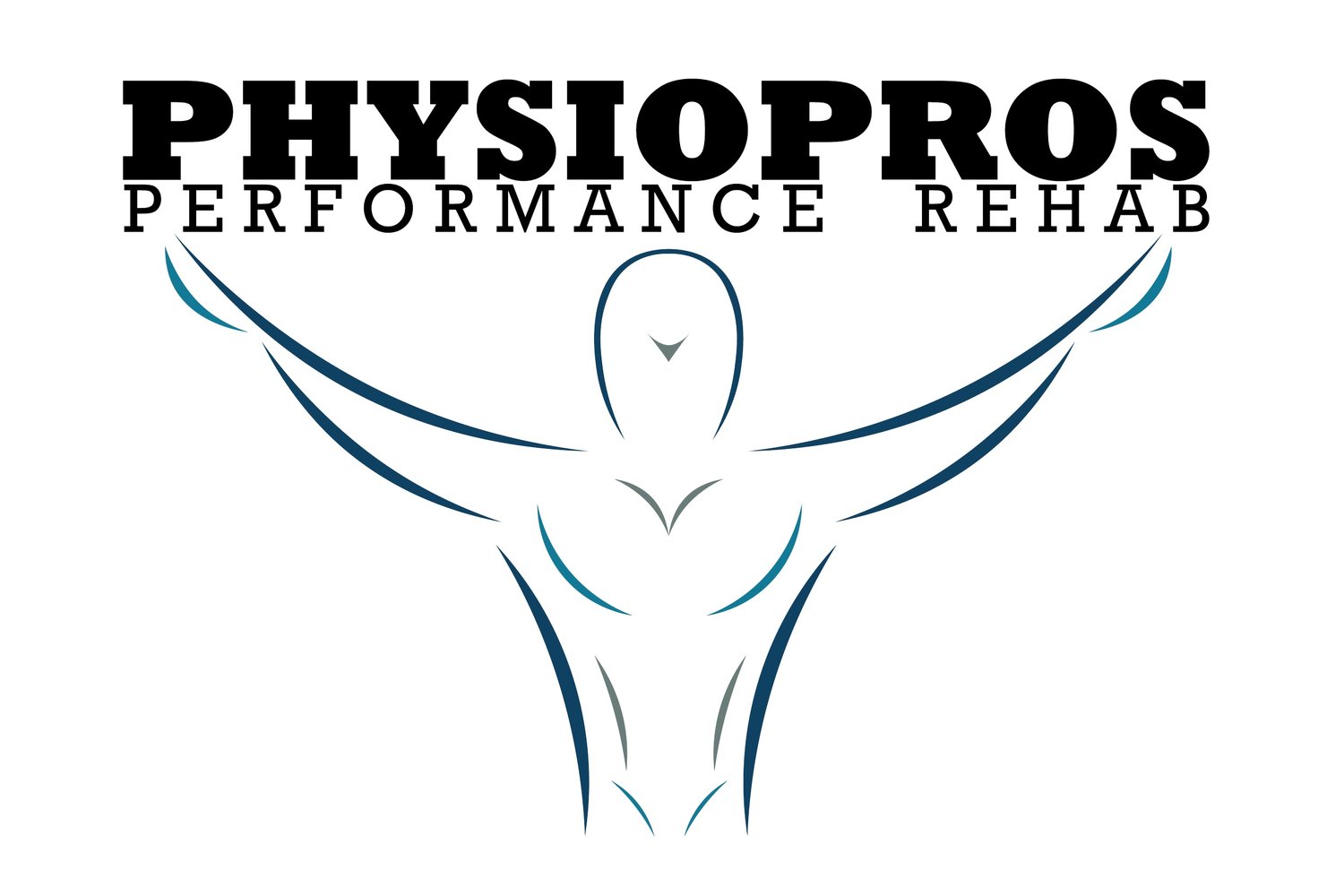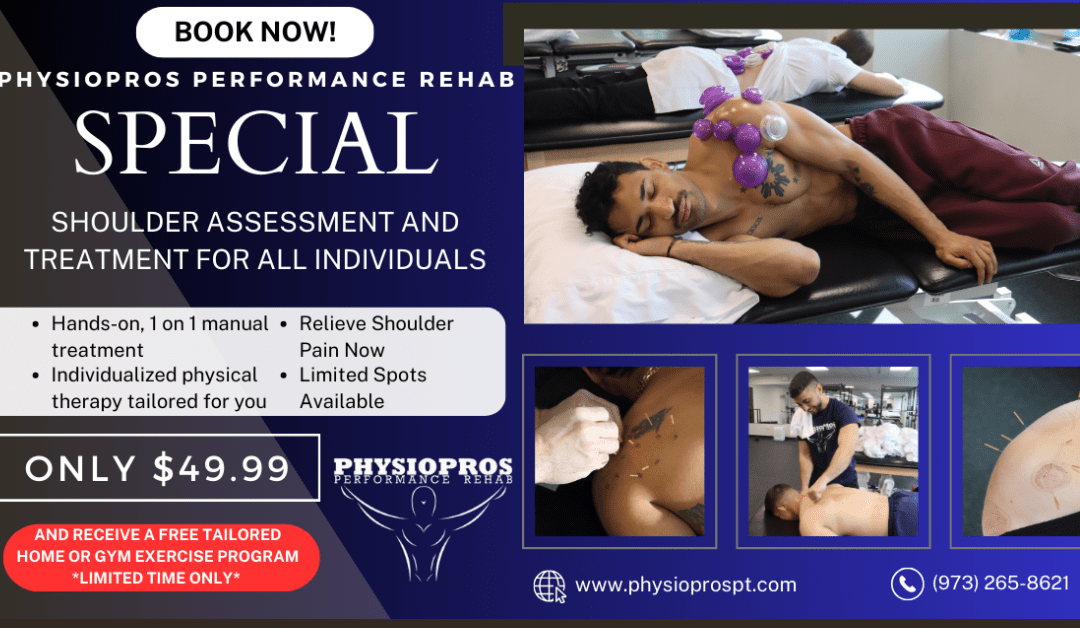Shoulder pain is a common problem that affects people of all ages, from athletes and active individuals to those dealing with age-related wear and tear. Whether it’s a dull ache or a sharp, debilitating pain, shoulder issues can make daily activities like lifting groceries, reaching overhead, or even sleeping a struggle. Fortunately, there’s no need to settle for a life of limited movement. At Physiopros Performance Rehab, we understand how crucial it is to get back to doing what you love, pain-free.
In this post, we’ll dive into three of the most common causes of shoulder pain and explain how physical therapy can play a key role in your recovery. From rotator cuff injuries and frozen shoulder to shoulder impingement, each condition presents its own challenges, but with the right approach, relief is achievable. By identifying the root cause and using targeted physical therapy techniques, you can regain mobility, reduce pain, and prevent future problems. Let’s explore how we can help you get back to living life to the fullest.
LIMITED TIME ONLY SHOULDER SPECIAL
WE ARE CURRENTLY RUNNING A SHOULDER SPECIAL FOR THE MONTH OF OCTOBER 2024! CHECK OUT OUR SHOULDER SPECIAL PAGE FOR MORE INFORMATION AND TO TAKE ADVANTAGE OF THIS AMAZING OFFER!
Rotator Cuff Injuries: Symptoms, Treatment, and Recovery Tips
The rotator cuff consists of four muscles and tendons that stabilize the shoulder joint. It’s essential for shoulder movement and stability, but prone to injuries due to repetitive motion, age, or trauma. Common rotator cuff issues include:
- Tendonitis: Inflammation due to overuse.
- Tears: Partial or full, caused by acute injury or degeneration.
- Impingement: Tendons get pinched during movement.
Symptoms
- Pain with lifting or reaching behind.
- Shoulder weakness.
- Crackling sensation during movement.
- Pain worsening at night.
How Physical Therapy Can Help
- Targeted Strengthening Exercises: Supports the shoulder by building muscle without aggravating the injury.
- Stretching and Flexibility Work: Reduces tension and improves mobility.
- Manual Therapy Techniques: Alleviates pain and promotes healing through joint mobilization, dry needling techniques, cupping and soft tissue massage.
- Movement and Posture Education: Helps avoid irritation and supports shoulder health.
Frozen Shoulder (Adhesive Capsulitis): Symptoms, Treatment, and Recovery Tips
Frozen shoulder, also known as adhesive capsulitis, is a condition where the shoulder joint becomes stiff and painful due to thickening and tightening of the joint capsule. This limits the shoulder’s range of motion and can significantly disrupt daily activities. It typically affects people between the ages of 40-60, and the risk is higher for those with certain medical conditions, such as diabetes or after prolonged immobilization following an injury or surgery. Frozen shoulder progresses in three stages:
- Freezing Stage: Increasing pain and gradual loss of movement.
- Frozen Stage: Pain may decrease, but the shoulder remains stiff.
- Thawing Stage: Shoulder mobility gradually improves.
Symptoms
- Gradual onset of stiffness.
- Difficulty raising the arm or reaching behind the back.
- Dull or aching pain, often felt in the outer shoulder and upper arm.
- Limited range of motion that worsens over time.
How Physical Therapy Can Help
- Stretching Exercises: Gentle stretching helps improve shoulder mobility and flexibility. Physical therapists guide patients through specific stretches that target the joint capsule, helping to gradually regain range of motion.
- Manual Therapy Techniques: Hands-on techniques such as joint mobilization can help loosen tight structures around the shoulder, reduce stiffness, and promote movement.
- Personalized Exercise Programs: A physical therapist can design a custom exercise program that progresses at the right pace for each patient, ensuring gradual improvement without overstressing the joint.
Physical therapy is a crucial part of frozen shoulder recovery, helping to restore function and alleviate pain through a personalized, step-by-step approach. At Physiopros Performance Rehab, we’re here to support you through every stage of your recovery. In addition, make sure to visit our Instagram to stay up to date on all things related to Physical Therapy.
Shoulder Impingement Syndrome: Symptoms, Treatment, and Recovery Tips
Shoulder impingement syndrome occurs when the tendons of the shoulder are compressed or “pinched” during arm movements, particularly overhead. This can cause irritation and inflammation of the tendons or the bursa (a fluid-filled sac that cushions the shoulder), leading to pain and reduced mobility. Impingement often affects athletes who frequently perform overhead motions, such as swimmers, weightlifters, or baseball players, but it can also arise from repetitive use or poor posture.
Symptoms
- Sharp or aching pain when lifting the arm, particularly above shoulder level.
- Weakness in the shoulder.
- Difficulty reaching up or behind the back.
- Pain that worsens at night or after activity.
How Physical Therapy Can Help
- Strengthening Exercises: Physical therapists prescribe exercises to strengthen the rotator cuff and other shoulder muscles to balance the joint and reduce impingement.
- Manual Therapy: Techniques like joint mobilization can help increase shoulder mobility, reduce inflammation, and relieve pain.
- Postural Training: Correcting poor posture can help alleviate impingement by improving shoulder alignment and mechanics during movement.
- Activity Modification: Physical therapists can recommend changes to daily activities to avoid movements that aggravate the shoulder, helping to manage symptoms while the shoulder heals.
Physical therapy is an effective way to treat shoulder impingement by addressing the root causes and restoring normal movement patterns.
In Conclusion
Shoulder pain can significantly impact your quality of life, but understanding the common causes like rotator cuff injuries, frozen shoulder, and shoulder impingement, can empower you to seek effective treatment. At Physiopros Performance Rehab, we emphasize the importance of identifying the root cause of your shoulder pain and utilizing physical therapy as a powerful tool for recovery.
By engaging in targeted exercises, benefiting from manual therapy, and receiving personalized guidance, you can regain mobility and strength in your shoulder. Remember, the sooner you address shoulder pain, the better your chances of a full recovery. Don’t hesitate to reach out to us if you’re experiencing any of these issues. Together, we can develop a tailored plan to help you get back to the activities you love, pain-free and stronger than ever! To schedule an appointment, visit our website : physioprospt.com or call us at (973) 265-8621.
Frequently Asked Questions (FAQ)
- What is the most common cause of shoulder pain?
The most common causes of shoulder pain include rotator cuff injuries, frozen shoulder (adhesive capsulitis), and shoulder impingement syndrome. Each of these conditions can arise from various factors, such as overuse, injury, or degenerative changes associated with aging. Understanding these causes can help in selecting the right treatment approach. - How long does it take for shoulder pain to improve with physical therapy?
Recovery time varies based on the specific condition and individual response to treatment. Many people start to notice improvements within 4 to 6 weeks of consistent physical therapy. However, more complex issues may take longer to resolve. Therefore, it’s essential to follow your therapist’s recommendations and maintain open communication about your progress for the best outcomes. - Can I do physical therapy for shoulder pain at home?
While some exercises can indeed be performed at home, it’s crucial to receive an initial evaluation from a physical therapist first. They can develop a personalized program tailored to your specific condition and needs, ensuring that you perform exercises correctly to avoid further injury. This initial guidance is vital to your recovery process. - When should I see a physical therapist for shoulder pain?
If your shoulder pain persists for more than a few weeks, worsens, or limits your daily activities, it’s a good idea to consult a physical therapist. Additionally, seek help if you experience severe pain, noticeable swelling, or an inability to move your arm. Early intervention can often lead to quicker recovery times. - Is surgery necessary for shoulder injuries?
Surgery is not always required for shoulder injuries. Many conditions can be effectively treated with physical therapy and other conservative measures. However, in some cases, such as severe rotator cuff tears or persistent frozen shoulder that doesn’t improve with therapy, surgery may be recommended. Always discuss your options with a qualified healthcare provider to make informed decisions about your treatment plan.

